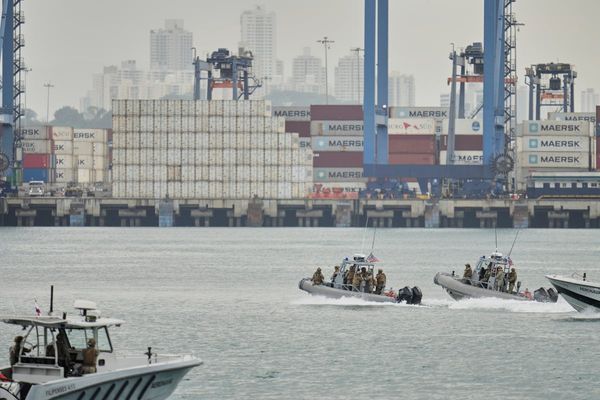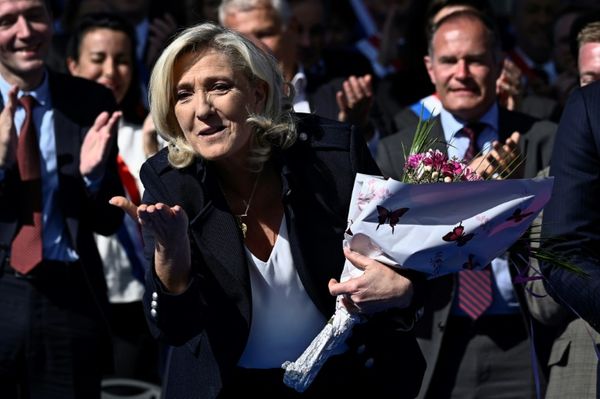
The parched villages of Gangapur in the desert state of Rajasthan have a new season in their calendar. Between November and February, car workshops along the town’s dusty mile-long market open before sunrise, cylindrical stainless-steel food containers are put on display, and traders stock up on chocolate and strawberry syrups.
Come March, the villagers start preparing to migrate. In the workshops, thousands of vehicles are converted into vans for selling a variety of ice-cream, from plain condensed milk flavoured with cardamom to chocolate, vanilla and pistachio, while local farmers turned dessert makers have their old mini-trucks serviced in readiness for the drive to distant towns and cities, where they will sell the sweet treat for the next nine months.
Ice-cream has become a lifeline for villagers in north-west India as decades of water scarcity have ruined farm yields and families’ livelihoods.
The ice-cream business has also spawned an entire industry in the town itself, yielding the rarest of all commodities: jobs. The number of vehicle repair shops and stores selling ice-cream paraphernalia has increased from 50 in 2015 to about 500 today.
Every year, an estimated 50,000 trucks are converted during the four-month season. Even the local printers are hiring staff to produce posters of ice-cream scoops against a backdrop of local temples and warrior kings.
There are an estimated 140 million internal migrants in India – people who leave their homes to find work at construction sites and factories, or as daily-wage workers in other states. Their decision to migrate is often rooted in mounting climate losses back home.
While remittances have bolstered household incomes and local economies, an entire industry growing out of a migration pattern is unusual.
“This market caters to 500 mini-trucks every day during the peak season from November to February,” Kalu Mohammad Pathan says in his workshop, as two workers slide under a truck for final checks before its owner leaves for Indore, an eight-hour drive away in the neighbouring state of Madhya Pradesh.
These trucks have become ubiquitous fixtures across cities in India, easily identifiable by their brightly coloured posters and neon lights.
“We earn enough during this season to survive the year,” says Pathan. “If there was no migration for this ice-cream business, people would have remained impoverished in these villages around Gangapur.
“There is no water here, no jobs,” he says. “And the landless find it difficult to migrate as setting up the business costs money, but now there is work for those left behind. Each workshop has created over 10 jobs.”
Rajasthan, known for its majestic forts, desert safaris, palaces and temples, is among the Indian states recording the highest migration numbers to other states, Indian statistics ministry data shows. The exodus from Rajasthan has been fuelled by the harsh climate of the arid region, with low rainfall leading to poor agricultural production.
People in Gangapur cannot remember the last good spell of rain. But the severe drought at the turn of this century – which destroyed crops of maize, peanuts and chillies, and left their animals starving – is still fresh in their memory. That was when the number of people seeking work outside Rajasthan began to swell.
Among those who left was Kanhaiya Prajapati, who was 16 in 2005 when he joined a fellow villager’s ice-cream truck travelling to Gorakhpur in the neighbouring northern Indian state of Uttar Pradesh.
“The farm yield had plummeted and there was no other income in sight. I returned home with 5,000 rupees after four months. It was decent money and the next year I decided to go on my own,” says Prajapati, sitting in front of his new ice-cream truck, an upgrade from the wooden cart he started his journey with almost 20 years ago.
In the past decade, about 100 people from Prajapati’s village of 350 have joined the same line of work, most driving the trucks.
They have all heard tales of the “snack culture” in the more prosperous states of Gujarat and Maharashtra, where families and friends visit roadside food carts until late at night, buying ice-creams, colas and ice lollies – unlike in their village, where the day ends at sunset.
Bhairav Lal Dhangar, 31, was 14 years old when his father, tiring of travelling 95 miles (150km) to Madhya Pradesh to graze his cows and buffaloes, bought a secondhand mini-truck.
“I have rented a place in Manasa [a small temple town] and I make the ice-cream myself. I am able to save at least 15,000 rupees [£140] every month to send to my family, which I would not be able to in my village,” he says.
The remittances have helped people’s families at home build concrete houses and install wells for their homes and to irrigate their farms.
Inspired by the success of the migrating men, a growing number of villagers started taking ice-cream trucks to neighbouring districts such as Bhilwara, where demand for milk at the local state-run dairy shot up, officials at the dairy said.
About two hours from Gangapur, in the lake city of Udaipur, a car dealer says they sell up to 600 mini-trucks – colloquially called chhota haathi, meaning “small elephant” – during the four-month season, and most are for ice-cream trucks.
More than 600 miles away from Gangapur’s market, Shankar Singh sets up his truck near a temple in suburban Mumbai. His assistant cleans the counters, lights an incense stick and switches on the LED lights that spread a fluorescent blue and orange glow around the vehicle.
“My family is able to eat because of this business. I can’t close this shop even for a day,” says Singh, who like many others will skip the journey back to his village to vote in the elections.
He cites the loss of earnings over the peak summer time – as well as a lack of faith in any political party solving his area’s problems of water scarcity, poor public transport and inadequate hospitals – as reasons to avoid the trip home to vote. Nevertheless, Mumbai is just a workplace for Singh and many others like him.
A common poster on ice-cream trucks in Gangapur shows Rajasthan’s desert, camels and traditionally attired women, with an old tourist slogan Padharo mhare desh (“welcome to our land”) emblazoned in bold letters. It’s a message to their customers but also a proud reminder of home.
• This article was first published by the Migration Story, India’s first newsroom to focus on the country’s vast internal migrant population







